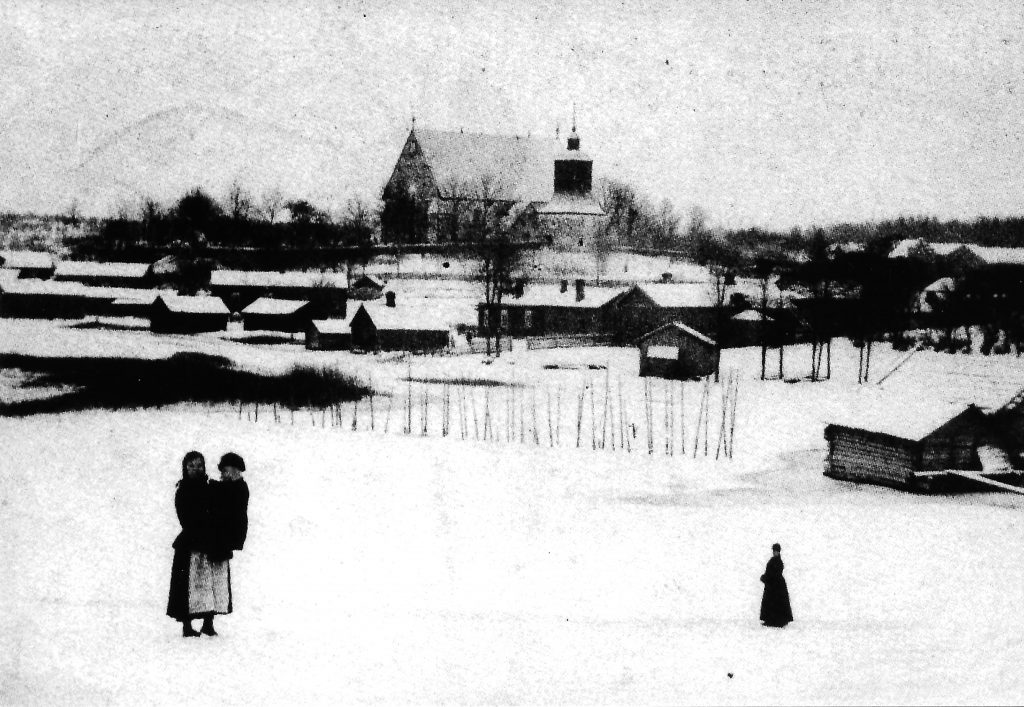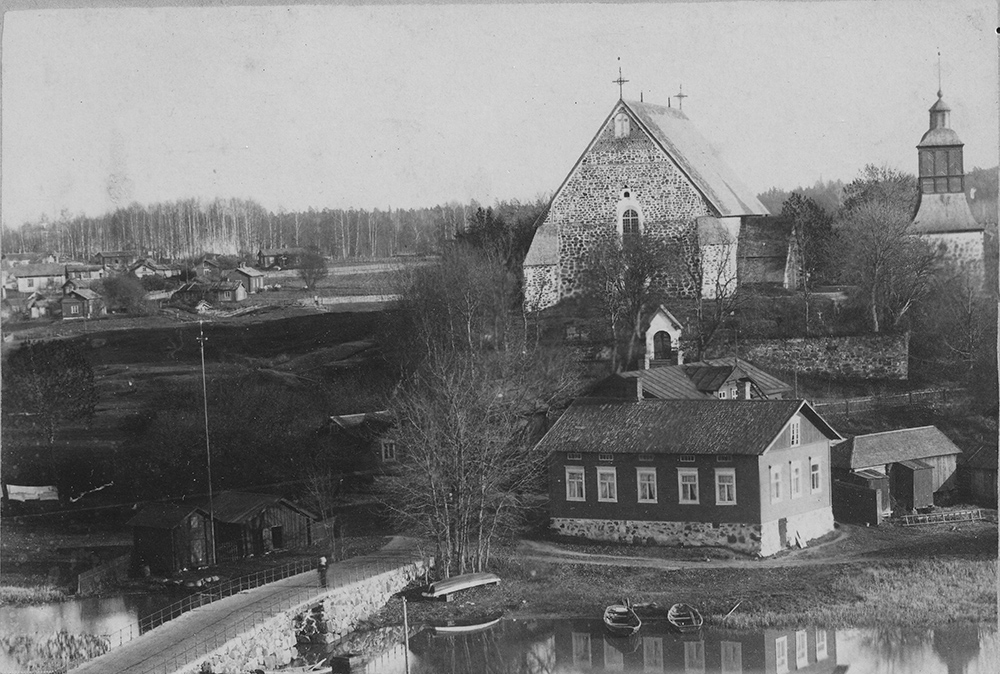The history of the old wood built town “Malmen”, which surrounds the church goes back to medieval times. During the medieval period the Church Hill was a peninsula, surrounded by water. The only connection to the larger island was a narrow landbridge to the east. The Grey stone church was built in the 14th century, and at the time a central site along the medieval waterway to Åbo.

Smoking, trade and drinking forbidden
The narrow sound which cuts Pargas in half was at the time much wider and used by sailing vessels en route to the market at Åbo. The church attracted population and commerce to the degree that the authorities took actions to curb the development of the town. In 1531 the Swedish king Gustavus Vasa forbade trade in all rural townhsips such as Pargas. The goal was to concentrate all commersial activities to only a few larger towns such as Åbo, so that trade could be controlled and taxed more efficiently.

The church owned most of the inhabited plots on “Malmen” during the 17th century, and the church and the authorities tried their best to curb growth, rather than encourage it. A census in 1694 indicated that there were only 25 people living in the township, but in reality the figure was much higher as many more people were unofficially accomodated in the cottages. In 1700 the census indicated that 80 people were living in the township.

Attempts to curb the urban development of Pargas was counteracted by the landowners and farmers who saw it in their interest that all paupers and beggars settled in the town and not in the villages. The landowners from distant areas from Pargas were also in need of quarters in town during Sunday mass and this also fuelled the urban development of Old Town.

The dissaray of closely built cottages and houses below the church posed a real fire hazard, especially as house roofs at the time were covered with birch bark or straw. In 1814 the church forbade all smoking at the church wall between the first of May and the 31st of October. At the parish meeting of 1837 it was decided that cottages equipped with a fireplace were not permitted closer than 300 feet from the church. Several fire inspections were conducted and restrictions put in place such as the 1852 prohibition on building smoke saunas in old town. Alla saunas in “Malmen” had to be equipped with chimneys.

Illegal taverns and the soliciting of spirits was a problem for the authorities as early as in the 17th century. In 1856 a statement indikated that “there were taverns in many of the houses in Malmen”. The 19th century also brought on economic reform and the introduction of free livelihood in Finlanf. Illicit trade and commerse had been quite common in “Malmen” but in 1863 the journeyman carpenter R, Sjöblom was permitted to open a shop. Several more shops were to follow, but they were short-lived. In 1912 the shop owner K.R.Ljungqvist boasted that his store at Malmgatan was the oldest one in town, etablished in 1885.


